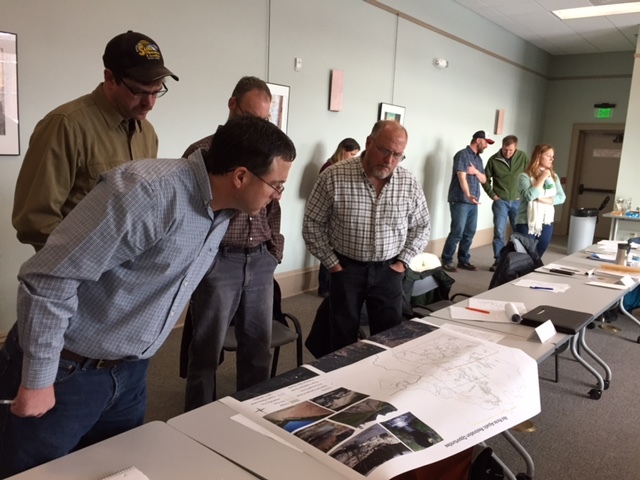All year, we share amazing stories about recreating on and restoring National Forests and Grasslands. Stay in the loop and sign up for Tree-Mail today!

Forests across the nation are facing serious challenges. Having sustainable, healthy, resilient forests in the future depends on the Forest Service's ability to increase work on the ground today. In 2017, the Forest Service began a strategic effort designed to better align their culture, policies, and procedures with current and future forest restoration needs in order to increase the pace and scale of restoration, improve forest conditions, and improve efficiency of forest products delivery.
Forest Products Modernization (FPM) is an overarching effort to examine how the Forest Service can train its employees, reform policy, increase the use of technology, and adjust processes to improve efficiency. For more information on FPM, view this fact sheet and the Forest Service's FPM website.
To achieve their goals, the Forest Service needs your help. The Forest Service and the National Forest Foundation recognize the importance of strengthening existing and developing new relationships with stakeholders and partners in this forest products modernization effort.
You may have heard of another parallel change effort going on within the Forest Service, called Environmental Analysis and Decision Making (EADM). These two change efforts are distinct, but connected.
EADM is focused on increasing efficiency and reducing the cost of the agency's environmental analysis and decision-making process, while FPM is focused on better aligning the agency's business practices for delivering forest products with current and future forest restoration needs. Together, these two efforts will allow the Forest Service to get more work done on the ground and improve the overall conditions of our national forests.
In the fall of 2018, the National Forest Foundation and the Forest Service launched a series of four FPM partner feedback sessions across the country, designed to enable two-way discussion and exploration between the Forest Service and partners and stakeholders, presented virtually with satellite locations at select Forest Service units.
Working with Forest Service leaders and employees across the country, the Forest Products Modernization team has identified several needs that must be addressed to move toward our long-term goal of aligning our practices, policies, and guidance to be more agile, flexible, and adaptable to better meet current and future forest improvement goals. The team examined training, policy reform, technological efficiencies, systems changes, and business changes. Several needs have been identified and are summarized in the needs for change.
Four areas of specific focus, which may have particular relevance to our stakeholders, include the following. These briefing papers describe current conditions and the need for change, with some initial solution ideas. These papers were used as briefing materials for the FPM partner feedback sessions. The first of these issue papers can be found here:
The FPM Forest Service team is also highlighting several new and innovative practices being implemented by individual districts or forests and sharing lessons learned with other units in order to foster implementation of innovative approaches to forest products delivery across the country. You can find several examples of innovations underway on the USDA Forest Service FPM website.
